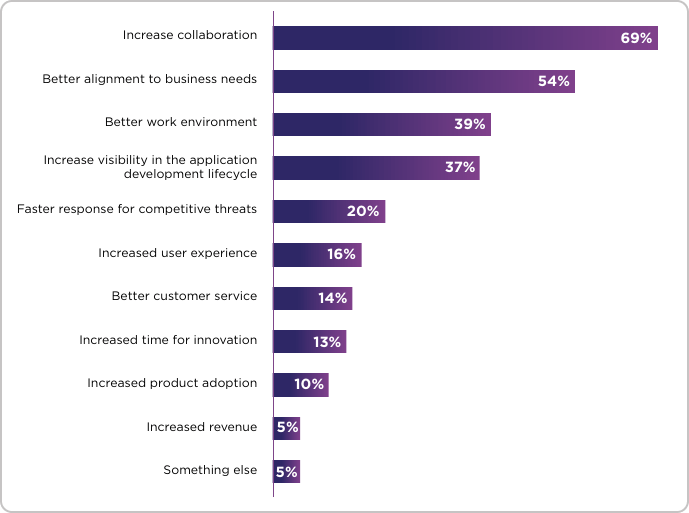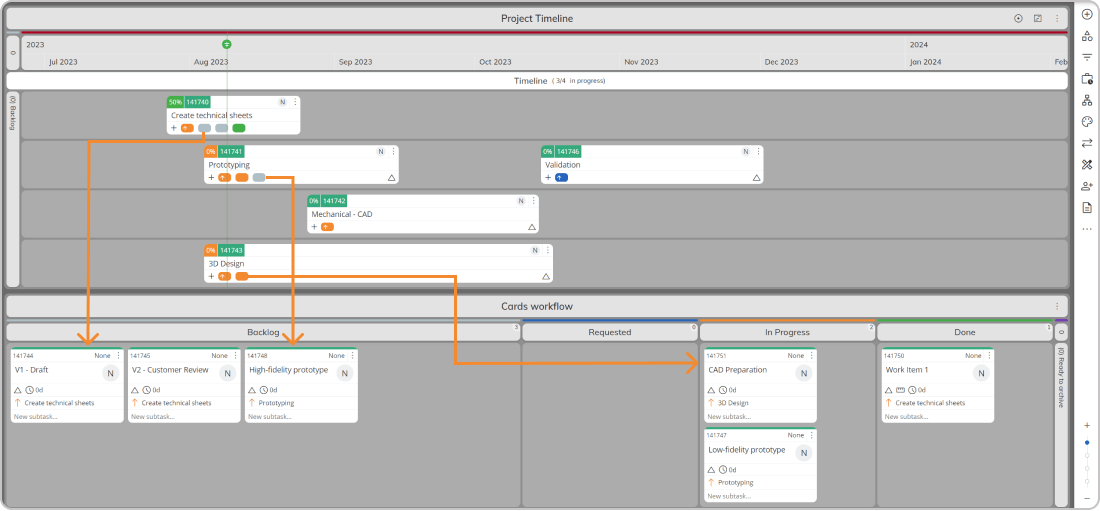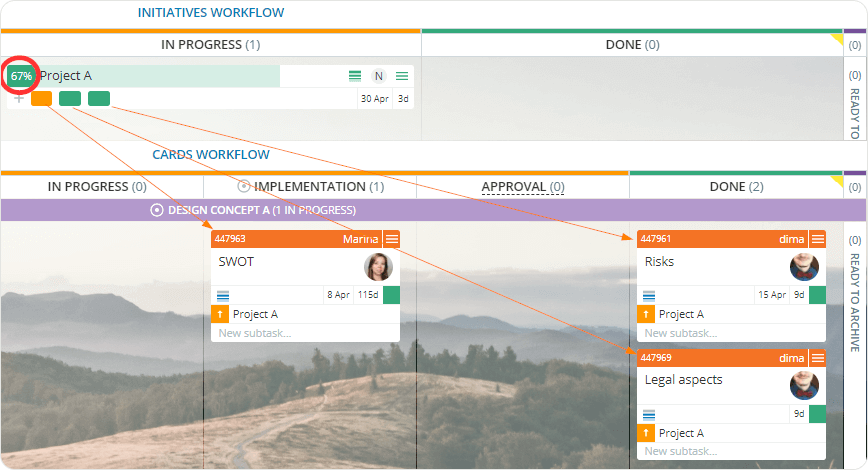Weekly status updates are not indicative of true project visibility. This popular misconception significantly impacts project success and alignment among organizational stakeholders. Unfortunately, it's frequently overlooked by project managers. Despite recognizing its importance, many struggle to attain genuine visibility amidst constant updates, messages, calls, and emails, leading to lost time and effort with little transparency achieved.
Let's examine the significance and uncover five practical strategies to enhance project visibility beyond the routine of weekly updates.
What Is Project Visibility?
Project visibility refers to the extent to which project stakeholders, team members, and decision-makers have access to relevant and up-to-date information about projects' status, progress, potential risks, resource allocation, and other critical factors. It involves providing transparency and clear communication throughout the entire project delivery process.
Why Is Project Visibility Critical for Project Success?
Project visibility ensures all relevant stakeholders have a clear picture of the project performance, including potential risks, distribution of responsibilities, and the overall project goals. It also enables project managers to uncover bottlenecks and other potential risks that may have a negative impact on project efficiency.
Furthermore, providing all stakeholders with visibility into work and project progress secures alignment and adds an element of accountability. Seeing in real-time how projects are progressing enables effective decision-making and empowers your team to work more nimbly.
Scaling your visibility from а project to the company level is a further optimization potential you should not neglect.
Benefits of Improved Project Visibility
Being listed as a top benefit for teams adopting the Agile approach to project management, increased project visibility brings various advantages. Among them, the three most crucial benefits are:
- Better Decision Making: Improved project visibility provides stakeholders with real-time data and insights on the project's status, progress, and performance. Let's say that there is a potential delay due to a critical bug discovered during testing. With improved project visibility, leaders can instantly see the bug's impact on the timeline, its severity, and the potential consequences of the delay in project deliverables.
- Improved Risk Management: Thanks to high project visibility, stakeholders can monitor emerging risks and implement prompt mitigation strategies. Timely risk management prevents issues from becoming major problems, reducing project failure risks. Transparent risk views aid in prioritizing critical tasks and allocating resources efficiently.
- Efficient Resource Allocation: Clear visibility enables project managers to optimize resource allocation, preventing overallocation or underutilization. This can help to reduce project delays and cost overruns, leading to improved productivity and project efficiency.
 Benefits of adopting the Agile practices to project management, Image credit: State of Agile Report
Benefits of adopting the Agile practices to project management, Image credit: State of Agile Report
How to Improve Project Visibility: 5 Proven Ways
Every project is a complicated system with its specific dependencies, requirements, documentation, approval processes, and more. As a project manager, you usually manage several projects simultaneously, which means you are overloaded with information that sometimes no one else has.
However, the struggle should not be to communicate faster but to manage your projects meaningfully. While project managers often took an intermediary role in the past, nowadays, managing a project is more about process optimization, value delivery, and efficiency. To refocus your energy in this direction, you first need to create a system that facilitates better project visibility.
1. Bring All Work in a Single Place
A significant project visibility blocker is a fragmented flow of information caused by too many communication channels and project management tools with no real connection between them. Often, you exchange documents via email. Then, you might upload them to Google Drive and, afterward, send the link in your instant messaging channel to the rest of the team. Soon, finding up-to-date information looks more like playing "Where's Waldo" than working.
To achieve high-level project visibility, first, you need to bring all project-related information to one place. This means no more emails as approval tools, no more instant messaging for critical questions, no more sheets for time tracking, or heavy Gantt charts for updating project status. It means bringing every bit of the work process into one place. The key is to find an effective way to streamline information - from work status and projections to links, comments, and reviews - so nobody wastes time searching.
For example, in Businessmap, we achieve this by visualizing our projects using a dedicated Timeline on a kanban board. The board helps us visualize the execution process and all its steps, and the work items (kanban cards) on the board contain all work-related information: description, size, owner, deadline, attachments, and external links, among other details.

The Timeline workflow feature in Businessmap provides a detailed calendar view of past, present, and future projects and initiatives. This comprehensive perspective ensures teams have a clear understanding of the current workload and capacity, granting them the flexibility to adjust their direction as needed.
2. Define Clear Project Management Guidelines
Achieving project visibility also requires explicit project policies. How and where we communicate, what kind of meetings we host, how we deliver work items, what the review process is, and so on should be explicitly defined. In Kanban, one of the leading practices is "Making process policies explicit" by visualizing them.
From our personal experience, the practice of introducing detailed work policies is crucial for managing projects efficiently. You cannot optimize a system that you do not understand. So, to deliver more with less, ensure it is clear to everyone how the project delivery moves forward.
3. Track Real-Time Project Status
The ultimate project visibility goal is real-time status at a glance for all stakeholders.
To achieve this level of project progress tracking, you need automatic updates on the status of work items and the project completion rate. The need for manual work automatically kills the real-time aspect.
For you, as a project manager, having a real-time overview of work status, blocked work items, or work ready for review opens new optimization potential. It also enables you to spend your time on valuable work and look for ways to improve your projects' flow efficiency.
Let me give you a simple example of our daily operations at Businessmap. Here you see a project in progress; you see it only contains three work items, and you also see 67% completion. Hoovering over the single cards related to your project, you can have a short glance at their status (at what stage the work is, deadlines, etc.).

This way, we eliminate the need for constant status reports without compromising our project visibility.
4. Visualize the Connection between Projects and Strategic Plans
For senior managers, the goal should be to scale team visibility on a company level by visualizing strategic goals and projects in the same project management tool. This way, strategy, and execution will meet under one roof to deliver a new type of visibility, clarifying which company projects are contributing to its strategic goals. Without such transparency, you risk an inefficient flow of information between the different company levels, causing misalignment and potentially wasted resources.
The Planning view in Businessmap, for instance, enables quick insights into project progress and its alignment with strategic objectives, facilitating real-time project reviews, tracking, and future planning based on capacity. Additionally, the Gantt chart-like feature supports project sequencing through predecessor-successor relationships, ensuring project B starts immediately after the completion of project A, thus preventing delays.

5. Take Advantage of Powerful Project Delivery Automations
Last but not least, automations can streamline critical processes, from task allocation to progress tracking, ensuring that every facet of the project is transparent and accessible. By automating repetitive and time-consuming tasks, you can focus on strategic decision-making and foster a more collaborative environment. This not only enhances efficiency but also addresses key cornerstones of project management, such as accurate scheduling, resource allocation, and risk mitigation.
For instance, the Timeline Report widget in Businessmap allows project managers to see, in a single glance, whether projects and initiatives are progressing as expected, monitor their progress, identify issues, and determine whether teams are meeting the company objectives.
Using a comprehensive traffic light status (red/yellow/green) system, the widget offers an instant view of all Initiatives (both started and completed) in the selected Timeline workflow.

How Is Project Visibility Different than Project Transparency?
Project visibility refers to the extent to which stakeholders have access to real-time data and information about a project's status, progress, and performance. On the other hand, project transparency goes beyond data accessibility and entails openness, honesty, and clear communication about project decisions, challenges, and risks.
While project visibility focuses on providing information, project transparency emphasizes fostering trust and understanding among stakeholders. For example, a project with high visibility may have real-time dashboards showcasing key metrics, but a project with high transparency ensures that stakeholders are openly informed about the reasoning behind project changes and the steps taken to address risks.

Michaela Toneva
SEO & Content Creator | Agile Practitioner
With a never-ending thirst for knowledge and a passion for continuous improvement, Michaela is an Agile practitioner with a good understanding of Kanban, Lean, and Agile methodologies. Her professional background includes SEO and content writing with a dose of sales and a pinch of social media.



